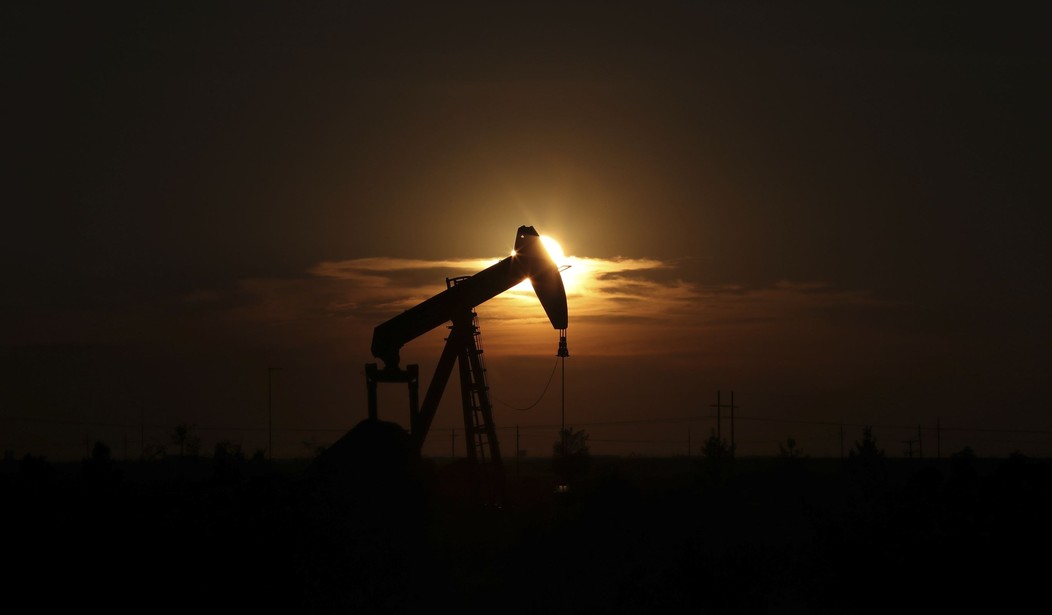Notice anything about the price at the pump?
It’s down a good bit, right?
Oil now below $70 bucks a barrel.
A few thoughts here:
1) Now would be a good time to refill the SPR.
2) With oil at the same level as it was in early 2018, it's clear oil is not the answer to inflation.
3) Oil always trades lower in anticipation of economic slowdown. pic.twitter.com/L3o0EtKJGp— Frog Capital (@FrogNews) December 6, 2023
And not because Joe Biden is a strategic market genius or anything – it’s because most of the world is in a serious economic slump and not using as much.
U.S. crude declined 4% on Wednesday, closing at the lowest level since late June with retail gasoline prices hitting the lowest point since January just ahead of the holiday shopping and travel season.
…U.S. crude and the global benchmark have fallen for five straight days, despite efforts by OPEC+ to boost prices by promising to slash supply in the first quarter of 2024.
Prices at the pump in the U.S., meanwhile, have followed oil prices lower to hit $3.22 a gallon on average as of Wednesday, the lowest price since Jan. 3, according to AAA.
Oil prices have been on a steep downward trajectory from September highs as nations outside OPEC+, particularly the U.S., pump crude at a breakneck clip and worries grow about the Chinese economy.
Moody’s on Tuesday downgraded its outlook for China’s government credit rating to negative from stable.
Crude did spike for a period in mid-October when the Israel-Hamas war broke out, but traders have largely dismissed the risk of a broader regional war that could disrupt supplies since then.
OPEC couldn’t agree on production cuts as a group at their last meeting, but the Saudis have pledged that they would “extend or even deepen” cuts. Analysts are skeptical.
The precipitous drop in support for crude has put a dent in Saudi Arabia’s – and by extension OPEC’s – plans to keep prices artificially inflated with those production cuts. This little downturn is costing the Kingdom a pretty penny – waah – and they’re in a bit of a quandary how to go about bolstering the bottom line.
Part of their problem has been US crude production. In spite of an anti-gas and oil administration, where there is money, there is profit to chase, which is exactly what US oil production has done. It has “exploded,” leaving the Saudis holding a production cuts bag that really doesn’t mean very much when US oil can make up the shortage difference.
…And right now, the set-up is similar to both earlier episodes, the market veteran said. There’s a lack of support from the rest of OPEC as countries like the UAE keep producing more oil while Iran is eating into Saudi’s share of Chinese crude oil imports. And then there’s weakening demand, like what happened during Covid.
“In all three instances you’ve had the biggest problem, arguably, which is that the US is just making highs and new highs and even further highs in terms of its own production,” Sankey said.
US crude production has exploded this year and recently hit a record high of 13.2 million barrels a day, according to the Energy Information Administration.
Meanwhile, global energy markets have become skeptical that OPEC+ is serious about its latest pledges to curb production. After the cartel’s meeting last week, when members vowed to extend cuts, oil prices fell.
In what was a related and nice finger-in-the-eye of the now in session COP28, Exxon had an announcement today.
.@ExxonMobil gives #COP28 last rites by announcing an increase in oil production.https://t.co/QnlRQdp1uy pic.twitter.com/pvNdhMlbnS
— Steve Milloy (@JunkScience) December 6, 2023
HAH
“What to do, what to do?” if you’re an Arab oil type.
Well, turns out the Saudis are contemplating a move they used in 2014 and 2020 to retake control of the global oil market and prices – they may flood the market with crude. Literally try to wash all their competitors out of the way, because they can afford for prices to tank as they can produce oil for bucks a barrel for extended periods.
…In an interview with Business Insider, he said Saudi Arabia may pivot to ramping up production to flush the market with a flood of supply in the first half of 2024. And that’s not to target emerging producers like Guyana or Brazil.
“You’ve got to attack the guy that’s making the marginal decision to drill or not — and that guy is Mr. Permian Basin,” Sankey said, referring to the US shale epicenter.
He later added, “I think to be specific, it’s a market share war.”
Saudi Arabia is currently producing about 2.5 million barrels a day below maximum capacity. If the country follows through with additional supplies that sink crude prices, the goal would be to essentially “bankrupt” the US industry by making it unprofitable to drill oil, Sankey explained. It’s a tactic Riyadh used in 2014 and 2020 to regain control over oil prices.
As someone pointed out in the discussion afterward, this is a riskier strategy now than it was in 2014, and why? Because shale drilling has come light years from where it was in 2014 when the Saudis successfully shut down and/or bankrupted a good portion of the US production, simply because it became too expensive for shale oil to get pulled out of the ground.
Those numbers and the technology involved in shale have changed dramatically in the intervening decade. Where shale oil used to become unprofitable at anything less than $70 bbl, now that break-even number is $42 bbl, and even other US producers, while more expensive, are still in good shape production costs-wise. That’s a huge difference, and a big margin for everyone to play chicken in if Saudi Arabi decides to go flooded tunnel scorched earth.
…Instead, the surge is concentrated in the Permian Basin region of Texas and New Mexico, where production costs are among the lowest in the country, said Alexandre Ramos-Peon, head of shale well research at Rystad Energy. Oil from the Permian Basin costs an average of $42 a barrel to produce, he said, with North Dakota in the high $50s to $60.
We here would obviously benefit from a break at the pump (even though it would give POTAUS something undeserved to crow about) and the oil industry might not suffer the catastrophic losses it did when the bust came in 2014. There’s more wiggle room in the system.
Watching everything else going wrong around the world while simply trying to survive the last (GOD WILLING) year of our vegetable-in-chief will also add to the volatility of the situation.
It will be interesting to see what their call is.









Join the conversation as a VIP Member